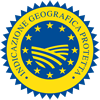Description
Faba de Lourenzá PGI is the Faba Galaica, a local variety of bean (faba) of the species Phaseolus vulgaris L., belonging to the Fabaceae or Leguminosae family, dried, separated from the pod, unblemished, whole, clean and intended for human consumption. Genetically, the Faba Galaica is an Andean variety of the species Phaseolus vulgaris. For international trade purposes, it is classed under 'Favada'.
Production Area
The beans are grown, prepared for sale and packed in the same area. This covers the coastal territory of the province of Lugo, a natural district known as A Mariña Luguesa, divided into three administrative districts: A Mariña Occidental, A Mariña Central and A Mariña Oriental, which include the municipalities of: Alfoz, Barreiros, Burela, Cervo, Foz, Lourenzá, Mondoñedo, Ourol, A Pontenova, Ribadeo, Trabada, O Valadouro, O Vicedo, Viveiro and Xove in the Autonomous Community of Galicia.
Production Method
The land is prepared for sowing by being worked two or three times in cross pattern with ploughs, harrows and rotovators. At this time fertiliser (manure from local farms) is applied so that the land will be in the best possible condition. The seeds are sown from May to June at a depth of 2 to 5 cm. To grow Faba Galaica the land needs to be prepared with the appropriate support structure to allow the plant to develop properly. Depending on the cultivation method chosen the structure can be formed of stakes made of wood or other materials, linked with taut wire or rope, with twine or netting stretched across the spaces (monoculture). In the case of the maize and beans grown together, the maize provides the support. Pests and diseases are combated using different methods. Watering will be frequent and evenly distributed, but light in order to prevent the formation of puddles.
Appearance and Flavour
The bean is plain and white all over, very big size (80-120 gr/100 seeds), with a length of 19-26 mm, 19-26 mm in length, 9-11 mm in width, thickness of 7-8 mm. It is kidney-shaped, long, of medium thickness with 14-17 % moisture. The bean has a low percentage of skin (8-10%) and high water absorption capacity. When cooked the beans remain whole-they do not split or disintegrate. The texture is smooth and creamy and the skin is so fine that it can barely be distinguished from the rest of the bean.
History
Beans are a very important crop in this area and they are widely referred to, for example in works such as Descripción económica del Reyno de Galicia (1804). Material in the archives at Vilanova de Lourenzá relating to the weekly market and monthly fair shows that this was an important crop in the district. At the beginning of the 1960s there was a sharp increase in bean production in the district of La Mariña Luguesa, especially in the municipality of Vilanova de Lourenzá. This was when the beans started to be known more widely on the market as Fabas de Lourenzá, and they are referred to as such in various gastronomic guides. The importance and popularity of this crop in the area led to the first 'Festa da Faba de Lourenzá' in 1991. This now takes place every year in the first week of October and has been listed as a tourist attraction by the Xunta de Galicia.
Gastronomy
Faba de Lourenzá PGI should be kept in fresh, dry, dark places, avoiding high temperatures. They are eaten cooked and can be used in a wide range of dishes like beans with vinaigrette or Fabas con chourizo e touciño with sausages and pancetta.
Marketing
The product is sold as Faba de Lourenzá PGI in the first categories and extra. The packaging is made of materials that allow the product to be properly ventilated, preserved and transported. Their capacity is between 0,5 kg and 1 kg.
Distinctive Features
The valleys where the Faba de Lourenzá PGI is grown are an optimal natural environment for growing beans thanks to the presence of deep, rich, well-drained, medium-textured soil (sandy or silty loam soil) and with a climate that is especially suitable, with mild, wet summers and small variations of temperature between day and night. These conditions have a fundamental impact on the quality of the product.






